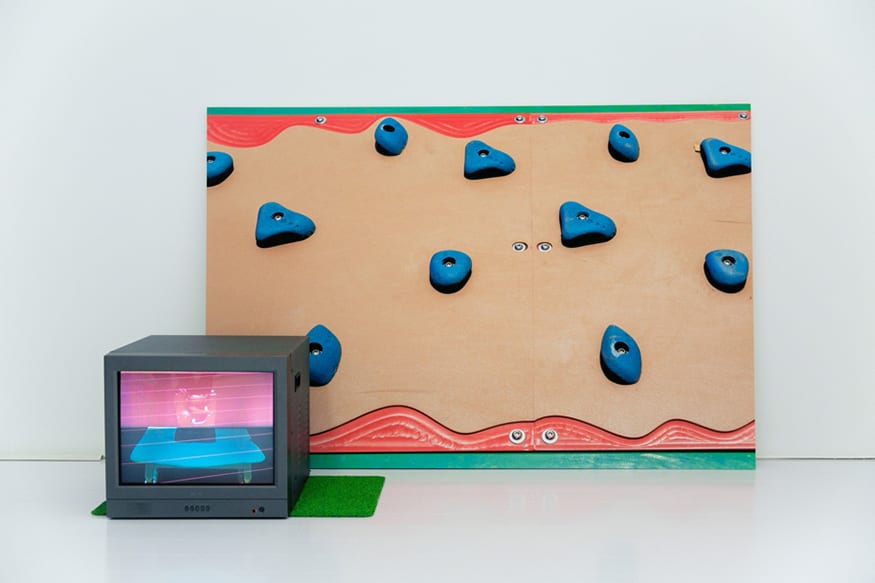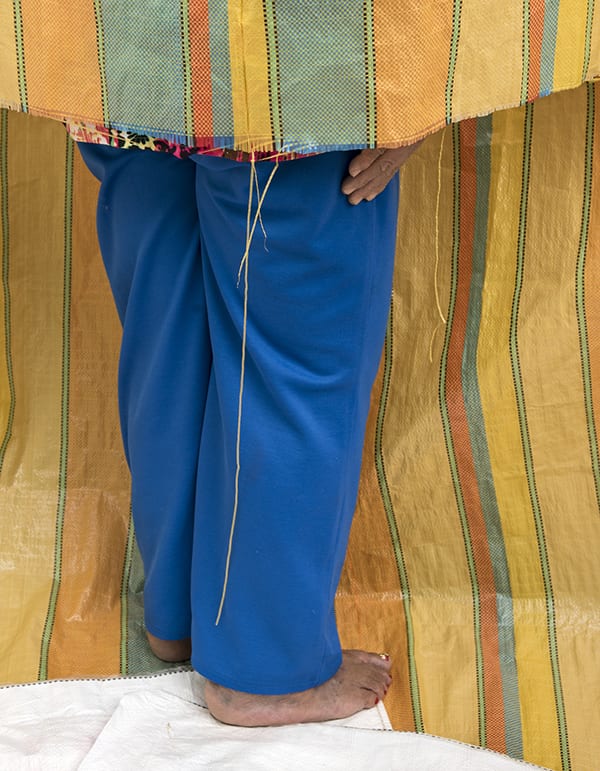Zhao Qian
A Field Guide
2019 HCP Fellowship Winner

The long-haul airplane flight is Zhao Qian’s metaphor for the associative, introspective, disorienting images in “A Field Guide.” When one is in an extended state of limbo, one casts about for visual stimulation, whether out the window or among the corporate entertainments offered by the airline. The spatial displacement mapped by Zhao’s San Francisco-to-Shanghai flight is also a cultural one that he experiences as a resident of both cities. The specificity of national identity is elided in non-sites such as airports, where all design decisions—from wayfinding signage to furniture to advertisements—are driven by maximum legibility and functionality. Within those leveling conditions, Zhao’s observational sensibility has the vibrancy and idiosyncrasy of a lucid dream. Scale shifts, odd juxtapositions, aggressive colors, and video sequences all contribute to an immersive effect that translates the montage strategies of surrealism and postmodernism into our fully digital present. Confronting the flattening tendencies of screen-culture—in which complex real-world objects, places, and emotions are dispersed into arrays of pixels—Zhao responds by mapping this flatness onto the dimensionality of a gallery or exhibition space. His open-ended Field Guide has infinite configurations. In that sense, it is not definitive in the traditional manner of the “field guide” format, which is intended to help the reader to identify flora, fauna, or other things in their natural environment. Instead, Zhao Qian’s work makes us wonder if contemporary image culture is now in fact our natural environment. In that new reality, the artist’s roving attention finds moments of individual meaning amidst the esperanto of global capitalism.
Cristina Velasquez
El Nuevo Mundo / The New World
2019 Carol Crow Memorial Fellowship Winner

“The New World,” as a designation for the Americas, originated in sixteenth-century Europe during the so-called age of discovery. Four centuries later, the term still evokes a combination of idealistic optimism and strategic exploitation. Cristina Velasquez questions this legacy from the perspective of her native Colombia. Deploying the concept of mestizaje, or the mixing of different ethnicities and cultures, Velasquez combines photography (a new medium) with weaving (an ancient method). Neither is privileged: weaving lends texture and dimension to photography, and photography adds representational detail to weaving. Velasquez produces objects that are overtly manual in origin, asking the viewer to think about labor—her own, and also that of Latin American people across the history of colonialism—as her true subject. Rather than illustrating working bodies in a conventionally documentary way, Velasquez frequently depicts isolated limbs in stylized, almost sculptural arrangements. These photographs are collaborative stagings of bodies in landscapes. In another form of mestizaje, they blend categories of genre and tone. Serious in intent and exacting in terms of craftsmanship, Velasquez’s “New World” is also animated by a sense of absurdity and joyous color. The artist’s approach is not didactic or propagandistic, but delivers its social and historic message via performance, engaging the viewer in the game of questioning, revision, and revelation.
—Britt Salvesen

